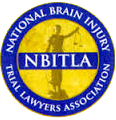Traumatic Brain Injury, Part 7: Vestibular Dysfunction
Today we are going to talk about a condition called Vestibular Dysfunction. Vestibular Dysfunction often arises after a brain injury. This topic has been on my mind a lot lately because I have a case that I am handling where my client was in an automobile accident. She was rear-ended, and hours later she began to experience intense vertigo. It is a complicated case, because about a month before the automobile accident, she went to the emergency room with vertigo, but it was very different to her. It felt different. The defense in the case is, of course, trying to say that whatever brought her to the emergency room a month prior, on that one occasion, was the real cause for her vertigo. However, from the date of the auto accident until today, which has been several years now, she has had persistent, continuous symptoms of vertigo that wax and wane, but they are always there.
So let’s talk about what Vestibular Dysfunction is and what we need to know about it so that we can represent our clients who have a Vestibular Dysfunction. A Vestibular Dysfunction can come from a traumatic brain injury, and essentially it is a problem with the inner ear and the sensory processing that accompanies it.
The vestibular system itself is a balancing mechanism. Our body’s balance requires coordination between the eyes, the inner ear, our joints, and our muscles. Each of these organs sends information about our position to the brain, which then allows the brain to work with our organs to balance our bodies. The inner ear is probably the most sensitive of these organs. Any problems with the inner ear can make it impossible for a person to balance.
Vestibular Dysfunction is a problem that we see in a fairly significant number of people in our society here in the U.S. It has been measured that approximately 35% of the U.S. citizens were diagnosed with Vestibular Dysfunction. Four percent of adults in the U.S. report having a chronic problem with balance, and more than one percent of adults report having a chronic problem with dizziness. There are many signs and symptoms with Vestibular Dysfunction, and today we are going to talk about just a few of them.
Vestibular Dysfunction can cause vertigo or dizziness. This can be protracted, it can be chronic, or it can be self-limiting. The natural result of that type of condition is decreased balance. There are problems with vision. There can be spatial disorientation, or the inability to know where you are in the space around you. It is very common with Vestibular Dysfunction, particularly where you have dizziness and vertigo, to have nausea, vomiting, headaches, irritability, over sensitivity to light and sound, decreased attention and concentration, and involuntary eye movements. A person can have any or all of those symptoms. The degree to which someone is affected by Vestibular Dysfunction is really a function of how many symptoms and how severe each of them are.
Let’s talk for just a moment about some of the causes of Vestibular Dysfunction. Any injury or degenerative disease that damages the inner ear can cause it. Impacts to the head are a major cause for Vestibular Dysfunction because an impact to the head may damage the sacks that are in the inner ear, thereby making the person who has the blow to the head unable to balance. Vestibular Dysfunction can also be caused by old age and degenerative changes in the inner ear. It is impossible to repair the injuries, so “healing” Vestibular Dysfunction (using that term in a very limited sense) is done through therapy to help manage the symptoms. What that means is essentially training to help re-balance, to help the person develop skills that will allow them to change their posture, change their position, and take control of their bodily movements. These are things that maybe you or I would take for granted because our bodies are working properly – our brains and inner ears are both working as they should – so these are all things that we don’t even have to think about.
But through training, exercise and postural modification, people who suffer from this condition can essentially learn to accommodate, live with, and control Vestibular Dysfunction without ever actually getting rid of it.
For more information and resources regarding Traumatic Brain Injuries, visit the Online Traumatic Brain Injury Resource Center located at our website, www.ericratinoff.com/TBI.

















